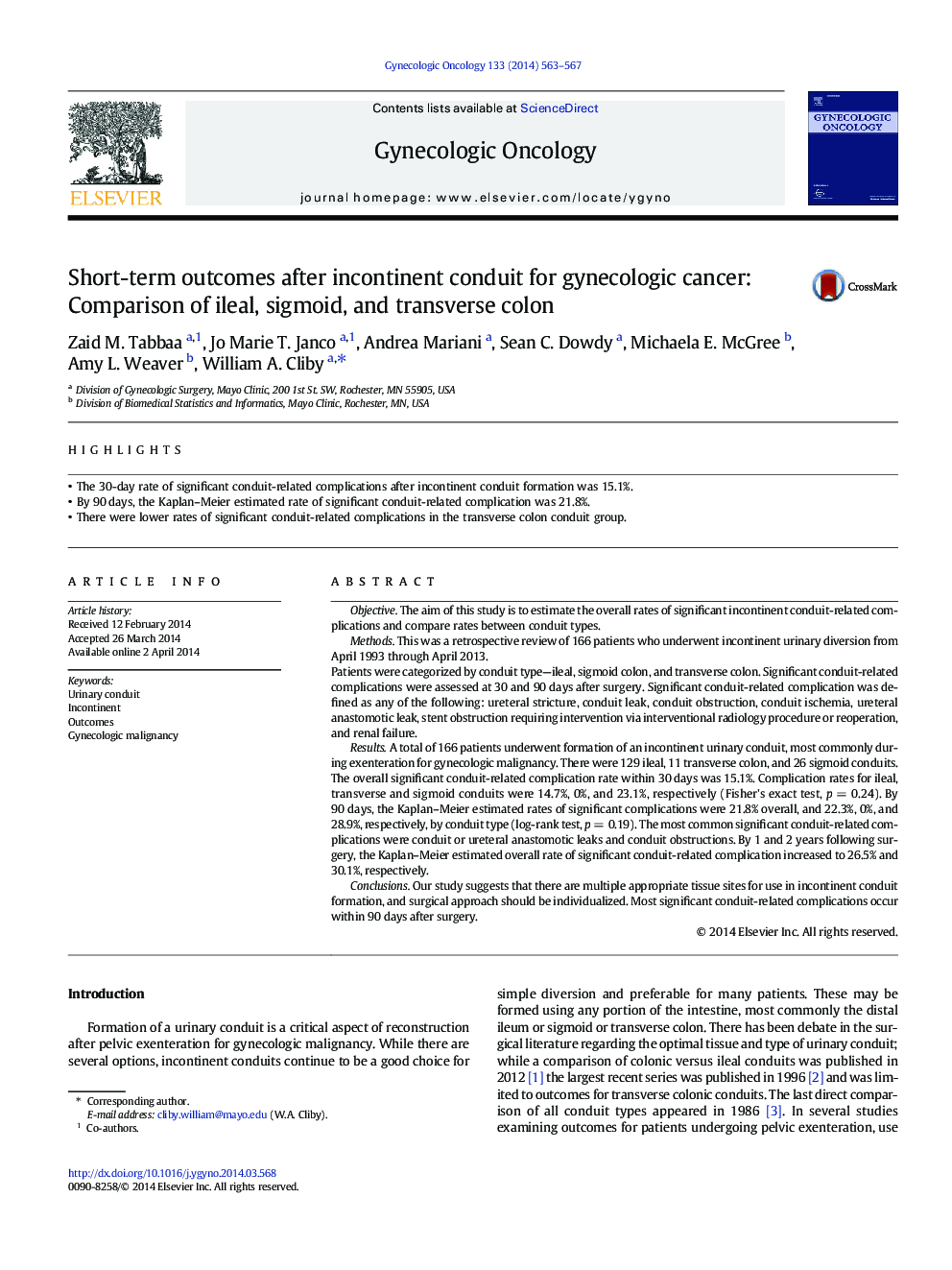| کد مقاله | کد نشریه | سال انتشار | مقاله انگلیسی | نسخه تمام متن |
|---|---|---|---|---|
| 3944620 | 1254219 | 2014 | 5 صفحه PDF | دانلود رایگان |
• The 30-day rate of significant conduit-related complications after incontinent conduit formation was 15.1%.
• By 90 days, the Kaplan–Meier estimated rate of significant conduit-related complication was 21.8%.
• There were lower rates of significant conduit-related complications in the transverse colon conduit group.
ObjectiveThe aim of this study is to estimate the overall rates of significant incontinent conduit-related complications and compare rates between conduit types.MethodsThis was a retrospective review of 166 patients who underwent incontinent urinary diversion from April 1993 through April 2013.Patients were categorized by conduit type—ileal, sigmoid colon, and transverse colon. Significant conduit-related complications were assessed at 30 and 90 days after surgery. Significant conduit-related complication was defined as any of the following: ureteral stricture, conduit leak, conduit obstruction, conduit ischemia, ureteral anastomotic leak, stent obstruction requiring intervention via interventional radiology procedure or reoperation, and renal failure.ResultsA total of 166 patients underwent formation of an incontinent urinary conduit, most commonly during exenteration for gynecologic malignancy. There were 129 ileal, 11 transverse colon, and 26 sigmoid conduits. The overall significant conduit-related complication rate within 30 days was 15.1%. Complication rates for ileal, transverse and sigmoid conduits were 14.7%, 0%, and 23.1%, respectively (Fisher's exact test, p = 0.24). By 90 days, the Kaplan–Meier estimated rates of significant complications were 21.8% overall, and 22.3%, 0%, and 28.9%, respectively, by conduit type (log-rank test, p = 0.19). The most common significant conduit-related complications were conduit or ureteral anastomotic leaks and conduit obstructions. By 1 and 2 years following surgery, the Kaplan–Meier estimated overall rate of significant conduit-related complication increased to 26.5% and 30.1%, respectively.ConclusionsOur study suggests that there are multiple appropriate tissue sites for use in incontinent conduit formation, and surgical approach should be individualized. Most significant conduit-related complications occur within 90 days after surgery.
Journal: Gynecologic Oncology - Volume 133, Issue 3, June 2014, Pages 563–567
